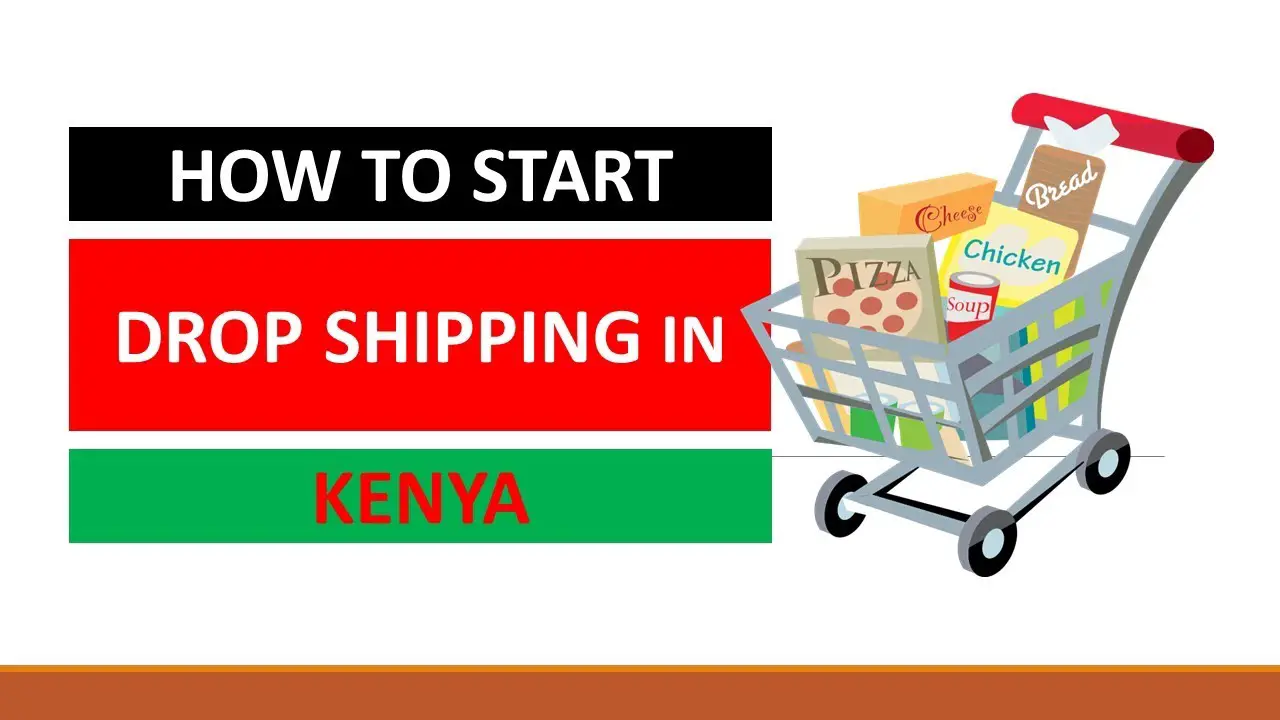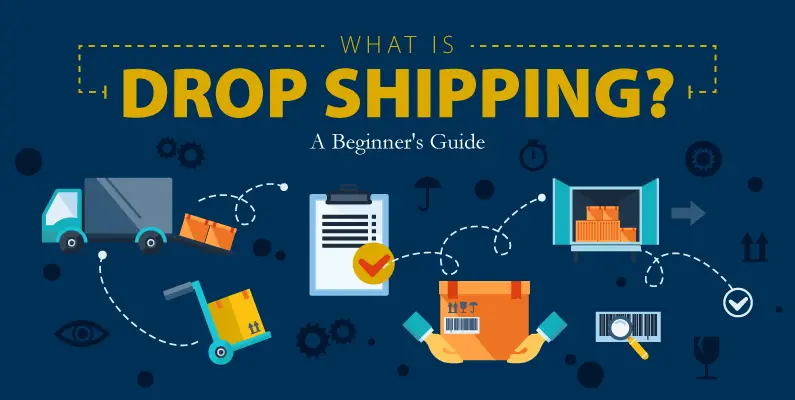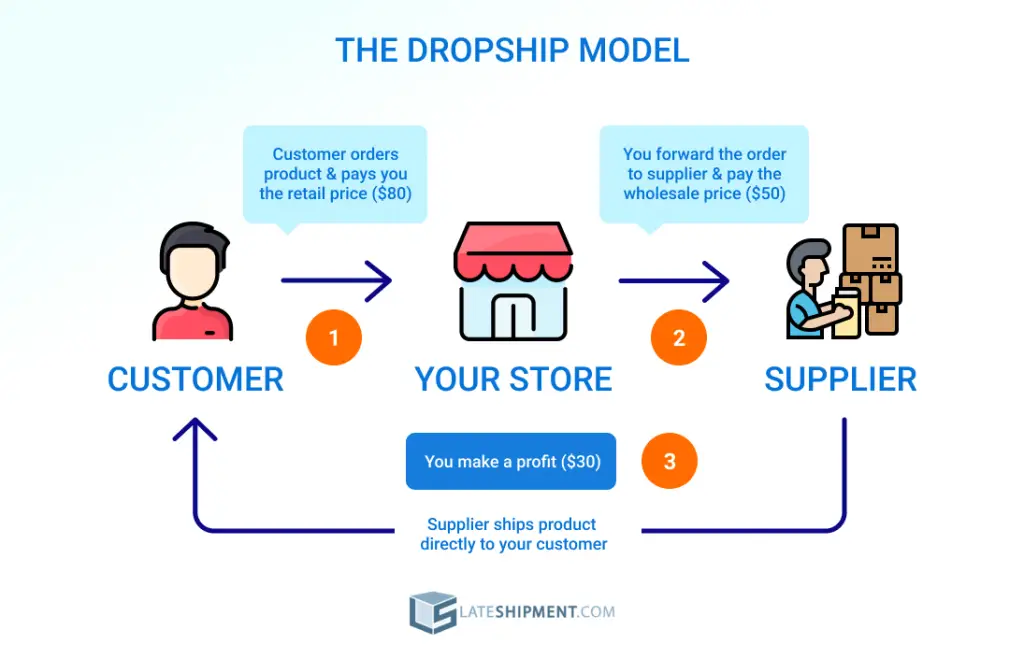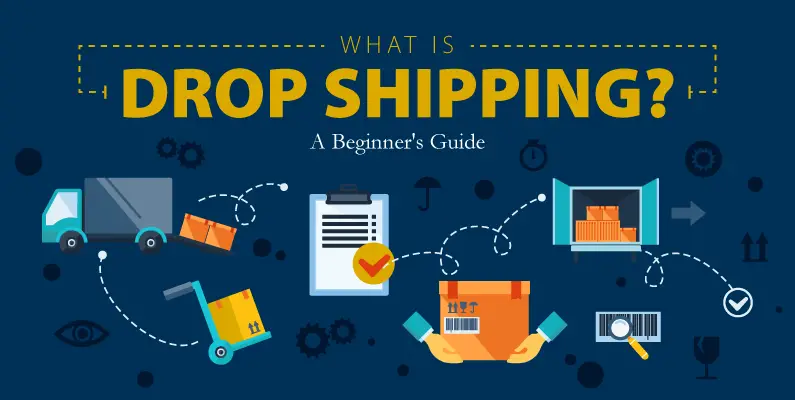Imagine being able to make money online in Kenya without the hassle of stocking inventory or handling shipping. With dropshipping, you can do exactly that. This article explores the exciting world of dropshipping and reveals how you can tap into this lucrative opportunity to earn a steady income from the comfort of your own home. Discover the ins and outs of dropshipping, from finding reliable suppliers to marketing your products effectively, and get ready to embark on a profitable online venture.

This image is property of i.ytimg.com.
What is dropshipping?
Dropshipping is a business model that allows you to sell products online without needing to stock inventory or handle the shipping logistics. Instead, you work with suppliers who will store the products for you and fulfill the orders on your behalf. This means that you can run an online store without the upfront costs of purchasing inventory, making it an attractive option for aspiring entrepreneurs.
An overview of dropshipping
In a traditional retail model, the store owner needs to purchase products in bulk and store them until they are sold. With dropshipping, on the other hand, you only purchase the products from the supplier once you have received an order from a customer. This eliminates the need for storage space and reduces the risk of holding onto unsold inventory. The suppliers will then ship the products directly to your customers, and you earn a profit from the markup between the wholesale price and the retail price.
How dropshipping works
When a customer places an order on your online store, you forward the order details to your supplier along with the payment. The supplier will then package and ship the product directly to the customer, using your store’s branding if desired. Since you never handle the actual products, your focus can be on marketing, customer service, and growing your business. This allows you to operate a business from anywhere with an internet connection and minimal capital investment.
Advantages of dropshipping
Low startup costs
One of the biggest advantages of dropshipping is its low startup costs. Unlike traditional brick-and-mortar stores, there is no need to invest in inventory upfront. This means that you can start your online store with minimal capital, making it accessible to individuals with limited funds. Additionally, since you are not handling the packaging and shipping yourself, there is no need to invest in shipping materials or a warehouse.
No need for inventory
Another advantage of dropshipping is that you do not need to worry about storing and managing inventory. This eliminates the costs and risks associated with purchasing inventory that may or may not sell. Instead, the supplier takes care of storing and fulfilling the orders. This frees up your time and resources to focus on other aspects of your business, such as marketing and customer service.
Flexibility and scalability
Dropshipping offers flexibility in terms of location and working hours. Since you are not tied to a physical store, you have the freedom to work from anywhere with an internet connection. Whether you choose to work from home, a co-working space, or while traveling, the choice is yours. Furthermore, dropshipping allows for scalability. As your business grows, you can easily expand your product range and reach a larger customer base without having to invest in additional physical stores or infrastructure.

This image is property of qodewire.com.
Choosing a profitable niche
Identifying market trends
To maximize your chances of success in dropshipping, it is important to choose a profitable niche. This involves identifying market trends and understanding what products are in high demand. By staying up-to-date with current market trends and consumer preferences, you can anticipate which products are likely to sell well. This will help you narrow down your niche and focus on offering products that have a high potential for profitability.
Researching product demand
In addition to identifying market trends, it is crucial to research the demand for specific products within your niche. This can be done through market research, competitor analysis, and customer feedback. By understanding the demand for certain products, you can ensure that there is a sufficient customer base to support your business. This will also help you determine which products to include in your product catalog.
Evaluating competition
Competition is inevitable in any business, and dropshipping is no exception. It is essential to evaluate the competition within your chosen niche to determine if there is room for your business to succeed. Analyze the pricing, product selection, and marketing strategies of your competitors to identify areas where you can differentiate yourself and offer unique value to your customers. This will help you carve out a niche within the market and attract a loyal customer base.
Finding reliable suppliers
Using dropshipping platforms
Dropshipping platforms, such as Oberlo and AliExpress, provide a convenient way to connect with suppliers and source products for your online store. These platforms often offer a range of products from various suppliers, allowing you to compare prices and quality. When choosing a dropshipping platform, it is important to consider factors such as supplier reliability, product selection, and shipping options. Look for platforms that have a good reputation and positive reviews from other dropshippers.
Contacting manufacturers and wholesalers
Another option for finding suppliers is to contact manufacturers and wholesalers directly. This allows you to build a direct relationship with the supplier and potentially negotiate better prices or terms. By reaching out to manufacturers and wholesalers in your niche, you can inquire about their dropshipping policies and discuss how you can work together. This approach may require more effort and research, but it can result in stronger partnerships and better profit margins.
Evaluating supplier reliability
Regardless of how you find your suppliers, it is crucial to evaluate their reliability before committing to a partnership. Look for suppliers who have a good reputation, reliable shipping times, and quality products. Read reviews and reach out to other dropshippers who have worked with the supplier to get their feedback. This will help you avoid suppliers who may have a history of poor customer service, delays, or low-quality products.

This image is property of dicksonkahuro.com.
Setting up an online store
Choosing an e-commerce platform
To set up your online store, you will need to choose an e-commerce platform. There are many options available, including Shopify, WooCommerce, and BigCommerce. Consider factors such as ease of use, scalability, customization options, and pricing when selecting a platform. Look for platforms that offer dropshipping integrations and tools to streamline your business operations. This will make it easier to manage your inventory, automate order processing, and track your sales.
Designing your website
Once you have chosen your e-commerce platform, it is time to design your website. Your website should reflect your brand and provide a user-friendly experience for your customers. Choose a clean and professional design that is visually appealing and easy to navigate. Include high-quality product images, detailed product descriptions, and clear pricing information. Make sure that your website is optimized for mobile devices to cater to the growing number of customers who shop on their smartphones.
Optimizing for search engines
To drive organic traffic to your online store, it is important to optimize your website for search engines. This involves incorporating relevant keywords into your product descriptions, titles, and meta tags. Focus on providing valuable and informative content that is relevant to your target audience. Additionally, consider implementing an SEO strategy that includes link building, guest blogging, and social media marketing. This will help improve your search engine rankings and increase visibility for your online store.
Marketing your online store
Social media marketing
Social media platforms, such as Facebook, Instagram, and Pinterest, provide valuable marketing opportunities for dropshipping businesses. Create engaging and visually appealing content that showcases your products and encourages customers to visit your online store. Leverage social media advertising tools to target specific demographics and reach a wider audience. Engage with your followers by responding to comments and messages promptly, and consider partnering with influencers in your niche to promote your products.
Content marketing
Content marketing involves creating and sharing valuable content that is relevant to your target audience. By providing informative blog posts, how-to guides, and product reviews, you can establish yourself as an authority in your niche and build trust with your customers. Incorporate relevant keywords in your content to improve your search rankings and attract organic traffic. Additionally, consider creating video content, such as product demos or tutorials, to engage with your audience and increase brand awareness.
Paid advertising
Paid advertising can be an effective way to drive targeted traffic to your online store and increase sales. Options such as Google Ads and Facebook Ads allow you to reach a specific audience based on their interests, demographics, and online behavior. Set a budget for your advertising campaigns and monitor their performance closely to ensure you are getting a good return on investment. Test different ad formats, targeting options, and messaging to optimize your campaigns and maximize your results.

This image is property of i.ytimg.com.
Managing customer orders
Automating order processing
Managing customer orders efficiently is essential for a smooth dropshipping operation. Consider implementing automation tools, such as order management software or plugins, to streamline your order processing. These tools can help you automatically forward order details to your suppliers, track the status of each order, and update your inventory levels in real-time. By automating repetitive tasks, you can save time and reduce the risk of errors or oversights.
Providing excellent customer service
Customer service is crucial for the success of any business, including dropshipping. Make it a priority to provide excellent customer service to ensure customer satisfaction and loyalty. Respond to customer inquiries and support tickets promptly and professionally. Offer multiple channels for customer communication, such as live chat, email, and phone support. Provide clear and transparent policies regarding shipping, returns, and refunds. By going above and beyond to meet your customers’ needs, you can build a positive reputation and encourage repeat purchases.
Handling returns and refunds
Handling returns and refunds can be challenging in a dropshipping business, as you are not physically handling the products. However, it is important to have a clear and fair return policy in place to address any customer concerns. Communicate your return policy clearly on your website and provide instructions on how customers can initiate a return or request a refund. Establish a process with your suppliers to handle returns and refunds efficiently, ensuring that customers receive a timely resolution to their concerns.
Analyzing and improving performance
Monitoring sales and profitability
Regularly monitor your sales and profitability to gain insights into the performance of your dropshipping business. Track key metrics such as sales volume, conversion rate, and average order value. Analyze which products are performing well and which ones may need to be replaced or promoted more aggressively. Use this data to identify opportunities for growth, optimize your pricing strategy, and make informed decisions about expanding your product range.
Analyzing customer data
Customer data provides valuable insights into the preferences, behavior, and needs of your target audience. Utilize analytics tools to gather and analyze data such as customer demographics, purchase history, and website engagement. Identify patterns and trends to understand what drives customer satisfaction and loyalty. Leverage this information to personalize your marketing campaigns, improve your product selection, and enhance the overall customer experience.
Implementing improvements
Based on the data and insights gathered, implement improvements to enhance your dropshipping business. This could include optimizing your website design, refining your marketing campaigns, or sourcing new products that align with customer preferences. Continuously evaluate and experiment with different strategies to find what works best for your specific niche and target audience. Stay up-to-date with industry trends and adjust your business accordingly to stay competitive in the ever-evolving dropshipping landscape.

This image is property of alidropship.com.
Overcoming challenges in dropshipping
Dealing with shipping delays
Shipping delays can be a common challenge in dropshipping, especially when dealing with international suppliers. To mitigate this, communicate shipping times clearly to your customers and factor in additional time for potential delays. Set realistic expectations and keep your customers informed about any delays or issues. Establish open lines of communication with your suppliers and discuss shipping options that can minimize delays, such as expedited shipping services or alternative shipping methods.
Managing inventory inaccuracies
As a dropshipper, you rely on your suppliers to manage and update inventory levels. However, inventory inaccuracies can occur, leading to situations where a product appears to be in stock but is actually sold out. To address this challenge, consider implementing inventory management tools that sync with your supplier’s inventory data in real-time. Regularly communicate with your suppliers to ensure accurate stock levels and have backup suppliers in case of any inventory shortages.
Handling customer complaints
Dealing with customer complaints is an inevitable part of running any business. In dropshipping, it is important to address customer concerns promptly and professionally, even if the issue was caused by the supplier. Take ownership of the situation, and work with the supplier to find a satisfactory resolution for the customer. Offer compensation or refunds when necessary, and use customer feedback as an opportunity to improve your business processes and supplier relationships.
Conclusion
The potential of dropshipping in Kenya
Dropshipping offers great potential for individuals in Kenya looking to make money online. With its low startup costs, flexibility, and scalability, dropshipping provides an accessible and lucrative business opportunity. By choosing a profitable niche, finding reliable suppliers, and establishing an online store, you can tap into the growing e-commerce market in Kenya and reach customers both locally and globally.
Taking action and getting started
If you are interested in starting a dropshipping business in Kenya, now is the time to take action. Begin by conducting thorough research and identifying a profitable niche. Look for reliable suppliers and choose an e-commerce platform that best suits your needs. Invest time and effort in marketing and customer service to build a strong brand reputation. Continuously analyze and improve your performance to maximize your success in the competitive world of dropshipping. With dedication, persistence, and a customer-centric approach, you can thrive as a dropshipper in Kenya’s online marketplace.




